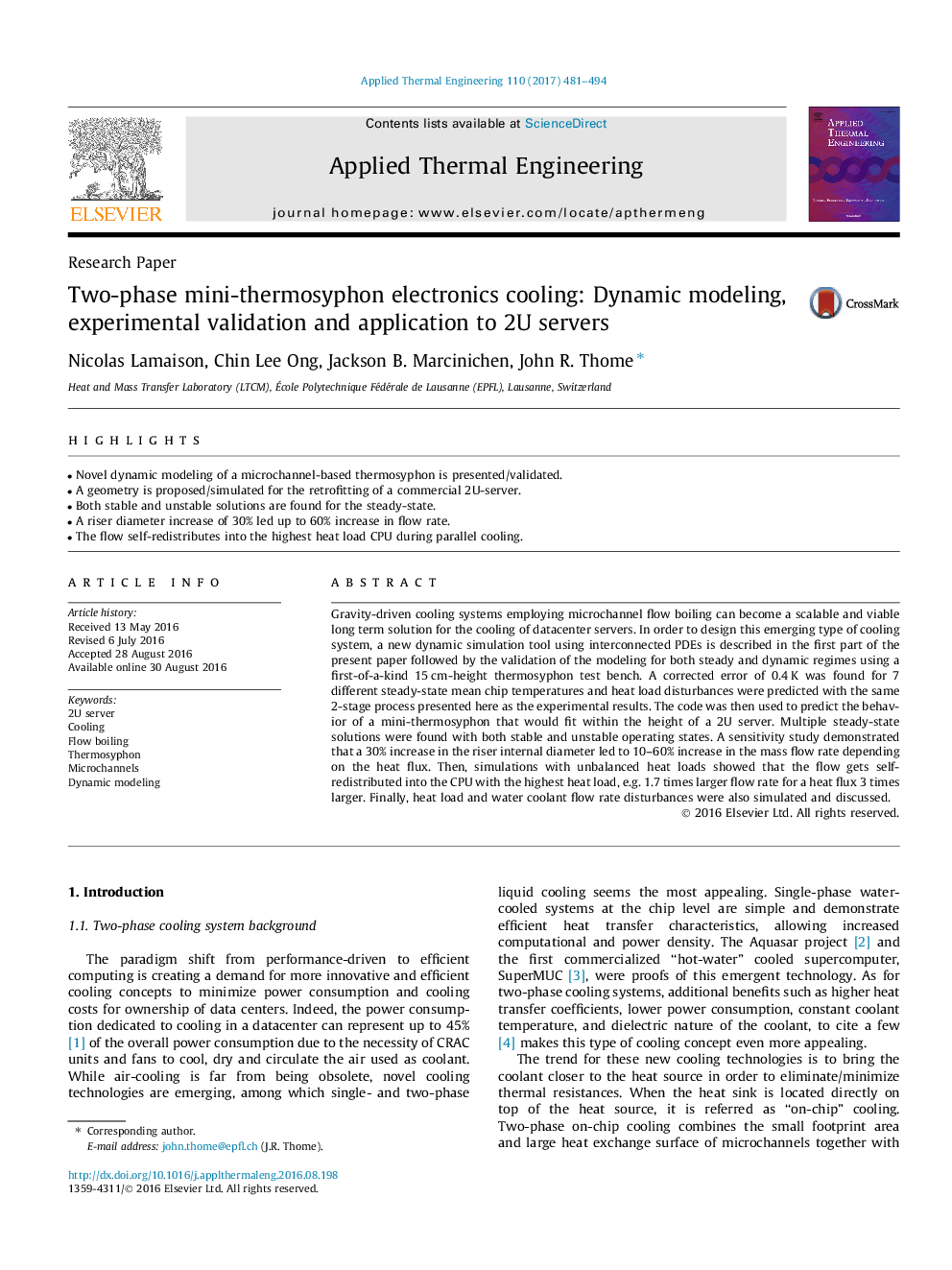| Article ID | Journal | Published Year | Pages | File Type |
|---|---|---|---|---|
| 4992035 | Applied Thermal Engineering | 2017 | 14 Pages |
â¢Novel dynamic modeling of a microchannel-based thermosyphon is presented/validated.â¢A geometry is proposed/simulated for the retrofitting of a commercial 2U-server.â¢Both stable and unstable solutions are found for the steady-state.â¢A riser diameter increase of 30% led up to 60% increase in flow rate.â¢The flow self-redistributes into the highest heat load CPU during parallel cooling.
Gravity-driven cooling systems employing microchannel flow boiling can become a scalable and viable long term solution for the cooling of datacenter servers. In order to design this emerging type of cooling system, a new dynamic simulation tool using interconnected PDEs is described in the first part of the present paper followed by the validation of the modeling for both steady and dynamic regimes using a first-of-a-kind 15Â cm-height thermosyphon test bench. A corrected error of 0.4Â K was found for 7 different steady-state mean chip temperatures and heat load disturbances were predicted with the same 2-stage process presented here as the experimental results. The code was then used to predict the behavior of a mini-thermosyphon that would fit within the height of a 2U server. Multiple steady-state solutions were found with both stable and unstable operating states. A sensitivity study demonstrated that a 30% increase in the riser internal diameter led to 10-60% increase in the mass flow rate depending on the heat flux. Then, simulations with unbalanced heat loads showed that the flow gets self-redistributed into the CPU with the highest heat load, e.g. 1.7 times larger flow rate for a heat flux 3 times larger. Finally, heat load and water coolant flow rate disturbances were also simulated and discussed.
